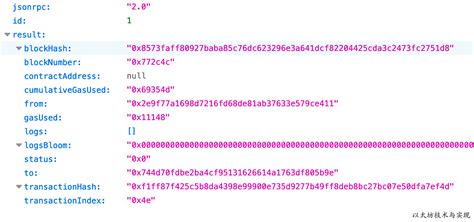Creation of an op_return transaction using Ethereum with Bitcoin.js

OP_Preturn transactions are a non -standard output type in Ethereum which can be used to send small amounts of data without the need for a reference transaction. In this article, we will show how to create an op_return transaction using Bitcoin.js, a popular JavaScript library to interact with the Bitcoin protocol.
Prerequisite
Before continuing, make sure you have installed the required libraries:
`bash
NPM Install Bitcoinjs-Lib
'
Also make sure you have a basic understanding of Ethereum blockchain and its key concepts, such as transactions, outings and addresses.
Creation of a transaction OP_PRETURN
Here is an example of an extract of code that shows how to create an op_return transaction with Bitcoin.js:
Javascript
var bitcoin = require ('bitcoinjs-lib');
var tx = new bitcoin.transaction ();
// Define the input (which pays) of the form [previous transaction hash, output index]
tx.addinput ({
Previous Transactionhash: "Your_previous_transaction_hash",
Index: 0
}, {
Secenndumber: 1,
Value: 10 // 10 Satoshis
});
// Define the data to be sent to the output (op_return)
tx.addoutput ({
Address: 'your_op_return_address',
Type: 'op_return',
Data: "Your description of the transaction OP_Preturn"
});
'
In this example, we create a new transaction and add two entries:
- The first input is an empty transaction which refers to your previous transaction (we will generate it later).
- The second entry sends 10 Satoshis (0.000001 BTC) to the address of the recipient.
We then define the data to be sent to the output, which is an OP_return transaction itself. This is where you would describe what you want to send as a small amount of data.
Generation of a reference transaction
To create an op_return input which refers to your previous transaction, you will need to generate a reference transaction. Here's how:
Javascript
// generate a new transaction (the output)
var tx = new bitcoin.transaction ();
tx.addinput ({
Previous Transactionhash: "Your_previous_transaction_hash",
Index: 0
}, {
Secenndumber: 1,
Value: 10 // 10 Satoshis
});
// create a reference transaction that refers to the output
tx.addoutput ({
Address: 'your_op_return_address',
Type: 'op_return',
Data: "Your description of the transaction OP_Preturn"
}). ADREFERENCE ({
Previous transactionhash: tx.hash (),
Secenndumber: 2,
Value: 1 // 0.000001 BTC
});
'
In this example, we generate a new outing with an address and data. We then create a reference input which refers to the original output.
Put it all together
Now that you have created the two entries (the empty transaction and the reference transaction), let's put everything together:
Javascript
var bitcoin = require ('bitcoinjs-lib');
var tx = new bitcoin.transaction ();
// Add the form (which pays) of the form [previous transaction hash, index of ...
tx.addinput ({
Previous Transactionhash: "Your_previous_transaction_hash",
Index: 0
}, {
Secenndumber: 1,
Value: 10 // 10 Satoshis
});
// Define the data to be sent to the output (op_return)
tx.addoutput ({
Address: 'your_op_return_address',
Type: 'op_return',
Data: "Your description of the transaction OP_Preturn"
});
'
Put everything in a single function
Here is an example of how you could bring everything together in a single function:
` Javascript
Createopreturntx function (opreturndescription) {
var bitcoin = require (‘bitcoinjs-lib’);
Return the new promise ((solve, reject) => {
// generate a new transaction (the output)
var tx = new bitcoin.transaction ();
// Add the form (which pays) of the form [previous transaction hash, index of …
TX.

